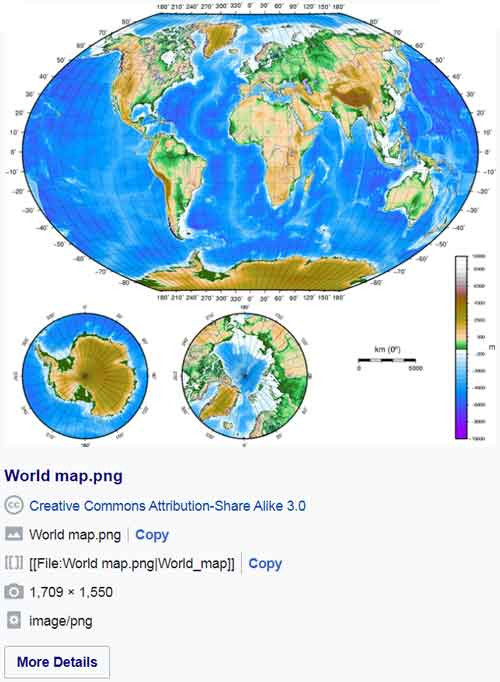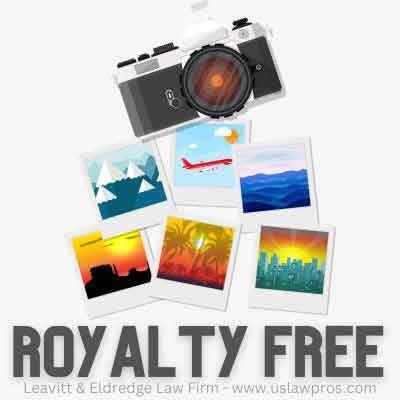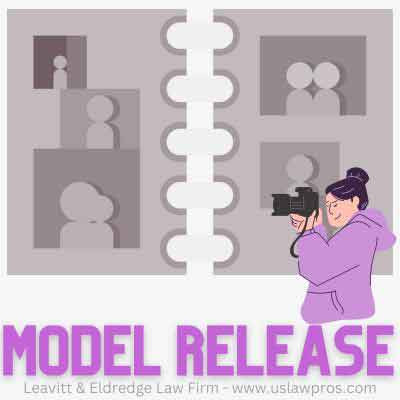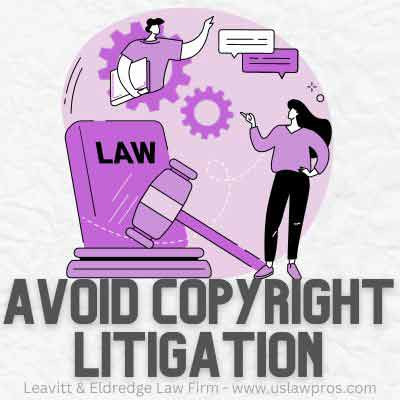 stock photos
stock photos
Many people who use online content platforms don’t fully understand the legalities of stock photos. Contrary to common assumptions, just because an image is easily found online doesn’t mean it’s free to use without considering copyright. Stock photos are a valuable resource for websites, marketing materials, and more, but they are protected by copyright laws and specific usage restrictions.
While stock photo websites often offer images for both personal and commercial purposes, it’s crucial to understand the terms of use before you download. Using stock photos without proper authorization or respecting the licensing terms can lead to legal problems and financial penalties.
For businesses, understanding stock photo copyright is especially important for maintaining brand reputation. Improper use of images can damage a company’s image. Therefore, grasping the basics of copyright law and fair use is essential before incorporating any stock photo into your projects.
This article will clarify the common misunderstandings around stock photo copyright and guide you on how to use them legally.
Decoding Stock Photos and Copyright
 what are stock images?
what are stock images?
Stock photos, or stock photographs, are images created by photographers or other visual content creators. These creators upload their work to stock photo agencies, allowing individuals and businesses to license the images for various uses. These images cover a vast spectrum of subjects, from nature and landscapes to people, animals, and everyday objects.
Stock photo agencies act as online libraries, housing these images in searchable databases. Understanding the interplay between copyright and stock photos is fundamental before using these resources. A stock photo agency is essentially a platform that curates and offers a wide array of high-quality images, illustrations, and visual content for licensing.
These agencies enable photographers to monetize their work by selling licenses to users who need visuals. Using stock photos, whether for business or personal projects, can be incredibly beneficial. However, almost all stock photo platforms require a license before you can legally use an image. This license is your permission to use the copyrighted work within specific guidelines.
Navigating the 5 Main Types of Stock Photo Licenses
Stock photo licenses determine how you can legally use an image. These licenses vary, ranging from those offered by premium platforms to those from free stock photo sites. Here are five common types of licenses you’ll encounter:
Royalty-Free (RF) Licenses
The Royalty-Free (RF) license is the most common type. It grants you the right to use an image multiple times across different projects after paying a one-time fee. The term “royalty-free” means you don’t have to pay ongoing royalties for each use, but it doesn’t mean the image is free of charge. While RF licenses offer broad usage rights, there might still be limitations on the number of reproductions or viewers, especially with free stock photo options. Always carefully review the specific terms before using an RF-licensed photo for commercial purposes. Learn more about RF images.
Freepik is a popular example of a provider offering royalty-free images. They offer a wide selection of photos, vectors, and illustrations suitable for both personal and commercial projects. You should review their license agreement and pricing plans to fully understand the permissions and costs involved. Freepik aims to make it easy to understand the necessary permissions associated with each image.
Image by Freepik
Unsplash, owned by Getty Images, is another well-known platform with a vast library of high-quality free images under its own license, which is similar to royalty-free. For enhanced protection, their Unsplash+ License includes a warranty of up to $10,000 (US) per licensed photo.
 Photo of a person holding a book, showcasing royalty-free stock photo usage Photo by Ahmed Almakhzanji on Unsplash
Photo of a person holding a book, showcasing royalty-free stock photo usage Photo by Ahmed Almakhzanji on Unsplash
Rights-Managed (RM) Licenses
A Rights-Managed (RM) license offers more controlled usage of a stock photo. Unlike royalty-free, RM licenses require you to pay for each specific use of the image. The cost of an RM license depends on several factors, including the image size, where and for how long it will be used, and the geographic distribution. RM licenses are generally more expensive than RF licenses, but they can offer exclusivity. This means that for the duration of your license, the same image won’t be licensed to others, giving your use a unique visual aspect.
Companies like Archangel and Trevillion are examples of agencies specializing in Rights-Managed images.
Creative Commons (CC) Licenses
Creative Commons (CC) licenses are widely recognized and offer a spectrum of permissions for using copyrighted works, including stock photos. A CC license indicates that the copyright holder is granting permission for use, often for free, but usually under specific conditions. These conditions can vary: some CC licenses require attribution to the original photographer, while others may restrict commercial use or require modifications for commercial applications. Creative Commons licenses are a great way to find images for social media and other online content when you need flexibility and cost-effectiveness.
Pexels is a prominent example of a platform offering free stock photos and videos under the Creative Commons Zero (CC0) license. CC0 essentially places the work in the public domain, waiving all copyright. Pexels is known for its high-quality visuals and user-friendly search.
Wikimedia Commons is another excellent resource, offering a vast collection of images under various Creative Commons licenses. The example below demonstrates how a CC-licensed image might be attributed when used online.
 World map illustration with Creative Commons license attribution example Topographical map of the world, Copyright © 2005 David Monniaux
World map illustration with Creative Commons license attribution example Topographical map of the world, Copyright © 2005 David Monniaux
Editorial Use Only (EUO) Licenses
The Editorial Use Only (EUO) license is specifically designed for images used in contexts where factual accuracy is paramount, such as news articles, documentaries, and educational materials. EUO licenses strictly prohibit commercial use, meaning these images cannot be used for advertising, marketing, or any promotional activities. The focus is on using the image to illustrate factual content, not to sell or promote a product or service.
Getty Images is a major provider that offers Editorial Use licenses. They even allow embedding some editorial images for free for non-commercial purposes. You can find more details about their Editorial Use options and working files on their website.
Extended Licenses
An Extended License expands the usage rights granted by a standard license, typically a royalty-free license. It allows for broader commercial applications that are usually restricted under standard licenses. For example, an extended license might permit the use of an image on merchandise for resale, in large-print runs, or as part of a product itself. If you plan to use a stock photo in a way that goes beyond typical marketing or website use, you likely need an extended license.
StockPhotos.com is one company that offers extended licenses to accommodate these broader commercial needs.
Understanding these different license types is crucial for ensuring that you are using stock photos legally and appropriately for your intended purpose.
Royalty-Free Images: A Closer Look at Licensing
 Explainer image about royalty-free image licenses
Explainer image about royalty-free image licenses
Royalty-free images are a popular and often misunderstood licensing model in stock photography. Understanding how they work is key to making informed decisions when choosing and using stock photos.
The term “royalty-free” often leads to the misconception that these images are free to use without any cost. However, “royalty-free” refers to the payment structure, not the price. Purchasing a royalty-free license means you pay a one-time fee for the right to use the image multiple times, without having to pay ongoing royalties for each instance of use. This makes them cost-effective and flexible for various projects.
While royalty-free licenses grant broad usage rights, it’s important to remember that you are purchasing a license to use the image, not ownership of the image itself. The photographer or stock agency retains the copyright. The cost of a royalty-free license varies based on factors like image size, resolution, quality, and the specific licensing agency.
A key advantage of royalty-free images is their accessibility and ease of use. They are widely available from numerous stock photo agencies, making it easy to find and download visuals for both editorial and commercial projects. The diverse range of subjects and styles available in royalty-free collections simplifies the process of finding suitable images for specific needs.
However, it’s essential to carefully review the terms and conditions of each royalty-free license agreement. While generally flexible, there may still be restrictions. These could include limitations on the number of copies or viewers, restrictions on use in certain industries or contexts, or limitations on resale or redistribution. Always read the fine print to ensure compliance with the specific usage guidelines.
Another important point to consider with royalty-free images is non-exclusivity. Multiple users can license the same image. This means that the same image you are using could also appear on competitors’ websites or in other projects.
Using Paid and Free Stock Photos Legally: Best Practices
Knowing how to use both paid and free stock photos legally is crucial to avoid copyright infringement. Here’s a guide to ensure you’re using stock photos ethically and legally:
Navigating Free Stock Photo Sites
A common question is: “Are stock photos free to use?” The answer depends entirely on the license attached to the image. When using “free” images, your primary step is to identify the license terms. This license dictates how you can legally use the image.
Before downloading from a free stock photo site, look for clear license information. Once downloaded, adhere strictly to the license requirements. If the license is unclear or missing, proceed with caution and try to find more information or choose a different image with transparent licensing. Proper attribution is often required even with free images, so be sure to check.
When searching online for images, be cautious with search terms like “find free images.” While you might find free options, “free” doesn’t always mean “use without restrictions.” Terms like “free stock photos,” “free image site,” etc., should still prompt you to verify the specific license terms before use.
Licensing Paid Stock Photos
Paid stock photo agencies typically offer clear licensing terms. When selecting a provider, prioritize reputable agencies known for high-quality images and transparent licensing. This ensures that the images are legally sourced and that you are protected from copyright issues.
Once you’ve chosen a paid stock photo, carefully review the specific license agreement for that image. Each image may have unique usage guidelines, restrictions, and requirements. Pay attention to permitted uses, limitations on modifications, and any attribution requirements. Understanding these terms is crucial for staying within the bounds of the license.
Proper attribution is often required, even with paid stock photos. Many licenses stipulate crediting the photographer. Ensure you provide credit visibly and appropriately, usually by mentioning the photographer’s name or linking to their portfolio alongside the image. This not only respects the creator’s rights but also adds transparency to your projects.
Maintaining Records of Your Stock Photo Licenses
Keeping organized records of both paid and free stock photos is essential for responsible image use. Before downloading any image, always check and ideally save the license information. Document each image you use, noting the license type, a description of the photo, and its source. A simple spreadsheet can be invaluable for this.
This record-keeping acts as proof of your legal right to use the image. In the event of a copyright inquiry or infringement notice, you can quickly provide evidence of your licensing and lawful usage.
Model and Property Releases: Permissions Beyond Copyright
 Explanation of model releases for stock photos
Explanation of model releases for stock photos
Beyond copyright, using images of recognizable people or private property commercially requires additional permissions in the form of releases.
A “model release” is a legal agreement where an individual (the model) grants permission for their image or likeness to be used commercially. This is essential when using photos of people in advertising, marketing, or product endorsements. It protects both the user of the image and the individual depicted, preventing potential legal claims related to unauthorized use of someone’s likeness.
A “property release” is similar to a model release but applies to identifiable private property. It’s a legal document from the property owner granting permission to use images or videos of their property for commercial purposes. This is relevant when using images of buildings, interiors, or landmarks in advertising or for commercial gain.
Both model and property releases are critical for ensuring you have all necessary permissions to use a stock photo commercially, going beyond just the image copyright itself. Always check if a release is required and provided when using images featuring people or private property for commercial projects.
Common Mistakes to Avoid When Working with Stock Photos
 Warning sign about avoiding copyright litigation
Warning sign about avoiding copyright litigation
Understanding stock photo licensing is vital to avoid common mistakes that can lead to legal issues. Incorrect stock photo usage can result in copyright infringement and violations of licensing agreements. Being aware of restrictions and guidelines before downloading images is crucial.
Familiarizing yourself with usage restrictions, licensing terms, and any attribution or modification requirements ensures you use images legally and compliantly. This proactive approach minimizes the risk of unintentional violations. Reputable stock photo sites usually make this information readily accessible for users.
Key Mistakes to Avoid:
-
Using images without permission: Downloading an image from the internet without checking the license and obtaining proper authorization is a direct copyright infringement. Always verify the license before using any stock photo.
-
Ignoring attribution requirements: If a license requires attribution, failing to credit the photographer or source as specified is a license violation. Always provide proper credit when required.
-
Modifying images without authorization: Stock photo licenses often include restrictions on modifying images. Altering an image without permission or beyond the terms of the license can lead to legal problems. Respect the original creator’s rights and seek permission if you need to make changes.
-
Violating license agreements: Each license agreement outlines specific usage limitations. Exceeding usage limits, using images for prohibited purposes, or distributing them beyond the permitted scope are all license violations that can result in legal repercussions, including copyright infringement notices.
To avoid these mistakes, always choose reputable stock photo agencies with clear licensing terms. Thoroughly read and understand the license agreement for each image before using it in your projects.
Personal vs. Commercial Use of Free Stock Images
Understanding the distinction between personal and commercial use is important when working with free stock images. This distinction hinges on how you intend to use the image.
Personal use refers to non-commercial, private applications. Examples include using an image for a personal blog, as a desktop wallpaper, in a presentation for a non-profit, or sharing with friends and family. Personal use generally doesn’t involve activities intended to generate revenue or promote a business.
Commercial use, on the other hand, involves using an image for business-related activities. This includes advertising, marketing materials, websites for businesses, products for sale, or any use intended for commercial gain. Commercial use almost always requires specific licenses and permissions from the copyright holder, and may involve fees, even for “free” stock photos that allow limited commercial use under certain licenses like Creative Commons.
Always carefully review the license terms of any stock image, especially free ones, to ensure your intended use aligns with the permitted uses outlined in the license.
Public Domain Images: Copyright-Free Visuals
The question of copyright becomes simpler with public domain images: Are public domain images copyrighted? The answer is no. Images in the public domain are free from copyright restrictions. This means copyright protection has expired, been forfeited, or simply doesn’t apply.
Public domain images can be used freely for any purpose – personal or commercial – without needing permission or paying royalties. This makes them a valuable resource for content creators seeking copyright-free visuals.
However, even with public domain images, exercise some caution. While the image itself is copyright-free, it might still contain recognizable individuals or trademarked elements. In such cases, you may still need to consider model releases, property releases, or trademark rights depending on your specific use.
To ensure an image is truly in the public domain, verify its status through reputable sources and online repositories that curate public domain collections.
Copyrighting Your Own Photos: Protecting Your Visual Assets
Creating original visual content provides a copyright-safe alternative to stock photos. Your own photography, vintage photos you own, or original artwork can be excellent sources of visuals. It’s crucial to copyright your original material to prevent unauthorized use by others.
Individuals and businesses can copyright their photos by registering them with the United States Copyright Office (or the equivalent in your country). You can submit a copyright application yourself, or seek assistance from legal counsel to guide you through the process.
Copyright registration provides legal protection for your original works. Once registered, you can use the “©” symbol to indicate copyright protection on your photos.
Preventing Unauthorized Use of Your Copyrighted Images
Copyright ownership is a valuable asset. Protecting your copyrighted images from illegal use is essential.
If you discover unauthorized use of your copyrighted images, seeking legal counsel is advisable. Typically, legal counsel can help you draft and send a cease and desist letter to the infringing party. This letter formally demands that they stop using your images. If the infringement continues, further legal action, including a lawsuit, may be necessary to enforce your copyright.
Responding to a Copyright Infringement Notice
Receiving a copyright infringement notice for image use can be concerning. If you receive such a notice, often in the form of a cease and desist letter, it’s important to seek legal advice.
An attorney can assess the situation, determine if infringement has occurred, and help you respond appropriately. In many cases, resolving the issue involves negotiating a settlement or taking steps to rectify the infringement.
To minimize the risk of copyright infringement notices, always exercise caution when using “free” images for commercial projects and ensure you have proper licenses for all stock photos you use.
Reverse Image Search: A Tool for Verification
Performing a reverse image search is a valuable technique for various purposes related to stock photos and copyright. It helps you:
- Find the original source of an image: Verify the authenticity and origin of an image.
- Identify similar images: Discover if an image is widely used or if there are variations available.
- Learn more about an image: Uncover information about the image’s context and usage.
Here are some popular reverse image search tools:
1. Google Images:
- Go to images.google.com.
- Click the camera icon in the search bar.
- Paste an image URL or upload an image.
- Google will show visually similar images and websites where the image appears.
2. TinEye:
- Visit tineye.com.
- Click the upload arrow icon.
- Upload an image or enter an image URL.
- TinEye will show where else the image is found online.
3. Bing Image Search:
- Go to bing.com/images.
- Click the camera icon in the search bar.
- Paste an image URL or upload an image.
- Bing will display similar images and related web pages.
These tools are helpful for verifying image sources, checking for potential copyright issues, and understanding the online presence of a particular image.
Conclusion: Using Stock Photos Responsibly
Stock photos are a powerful asset for enhancing projects. Understanding how to use them legally is crucial for avoiding copyright infringement and ensuring ethical image use.
Before using any image, always verify its license, even if it appears to be “free.” Remember that the absence of a copyright notice doesn’t automatically grant permission for use.
If you have any questions about stock photo licensing or copyright, consulting with a copyright attorney is always a wise step. The small cost of legal advice is minimal compared to the potential financial and legal consequences of copyright infringement.
Key takeaways: Stock photo agencies offer rights-managed and royalty-free images for various uses. Always prioritize using legally licensed, high-quality stock photos to protect your projects and avoid copyright issues.
Book Free Consultation Ask Questions
FAQ’s: Stock Photo Copyright and Usage
Can I use free stock photos for commercial use?
Yes, some free stock photos are available for commercial use. However, always carefully review the license terms. Look for licenses like Creative Commons Zero (CC0) or other permissions that explicitly allow commercial use, potentially with attribution requirements or other limitations.
Can I use a stock photo as my business logo?
Generally, using a stock photo as a business logo is not advisable. Stock photos are intended for broader uses like website content or marketing, not for unique brand identifiers like logos. Logos should be original and distinctive to represent your brand identity effectively.
Can you get in trouble for using Google Images?
Yes, using images found through Google Images without verifying the license can lead to copyright trouble. Google Images is a search engine, not a stock photo provider. It indexes images from across the web, many of which are copyrighted. Always trace the image to its source and check the license before using it. Opt for licensed or royalty-free photos to minimize legal risks.
Can you use stock images for free with a watermark?
No, using watermarked stock images for free is not permitted. Watermarks are intentionally placed on preview images to prevent unauthorized use. Watermarked images are samples and require licensing or purchase to remove the watermark and gain legal usage rights.
Do I need to credit stock photos?
Attribution or credit requirements vary depending on the stock photo license. Some licenses, particularly Creative Commons licenses and some free stock photo site licenses, require attribution. Royalty-free licenses often do not require attribution but it is still considered good practice in many communities. Always check the specific license terms to understand if and how attribution is required.